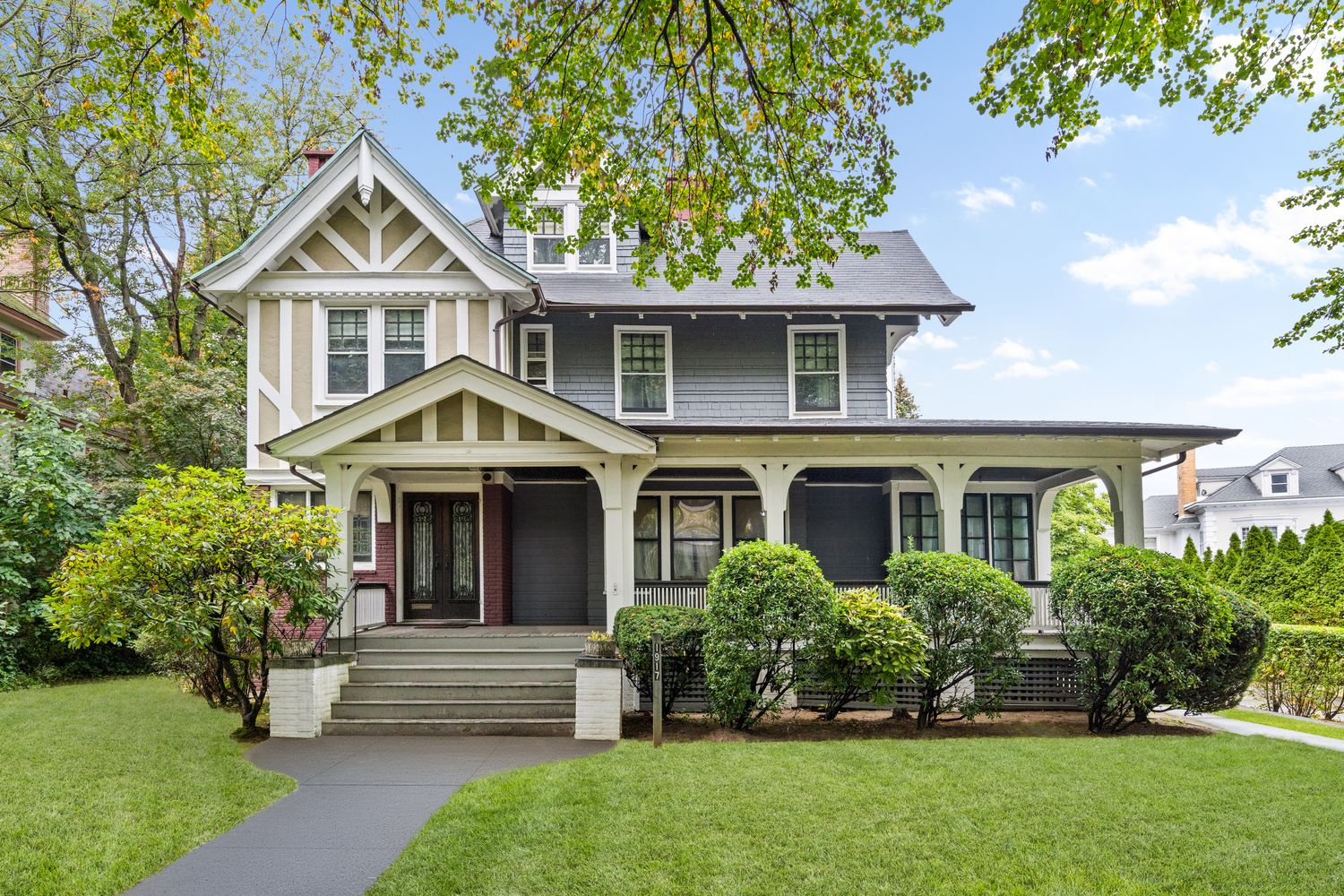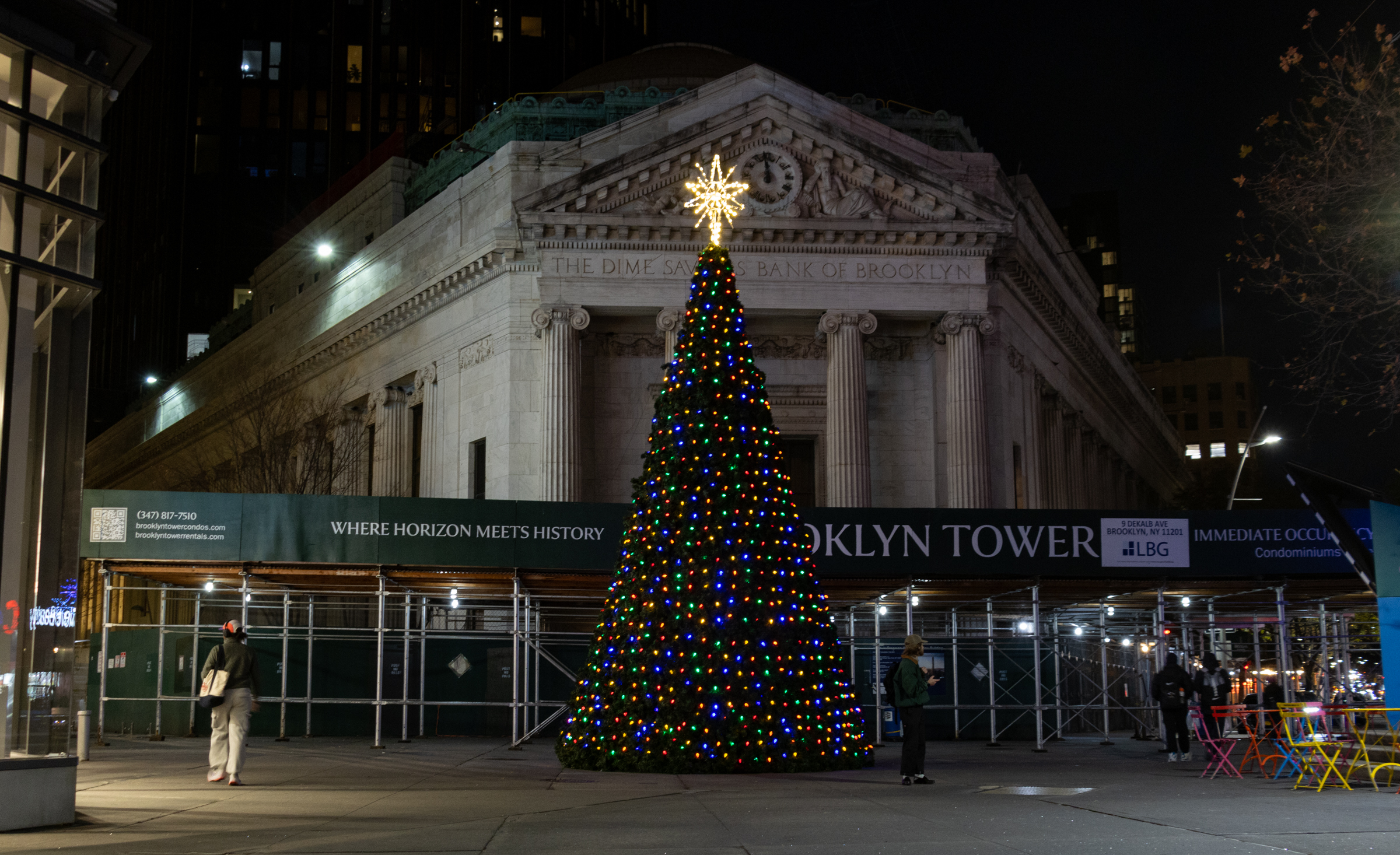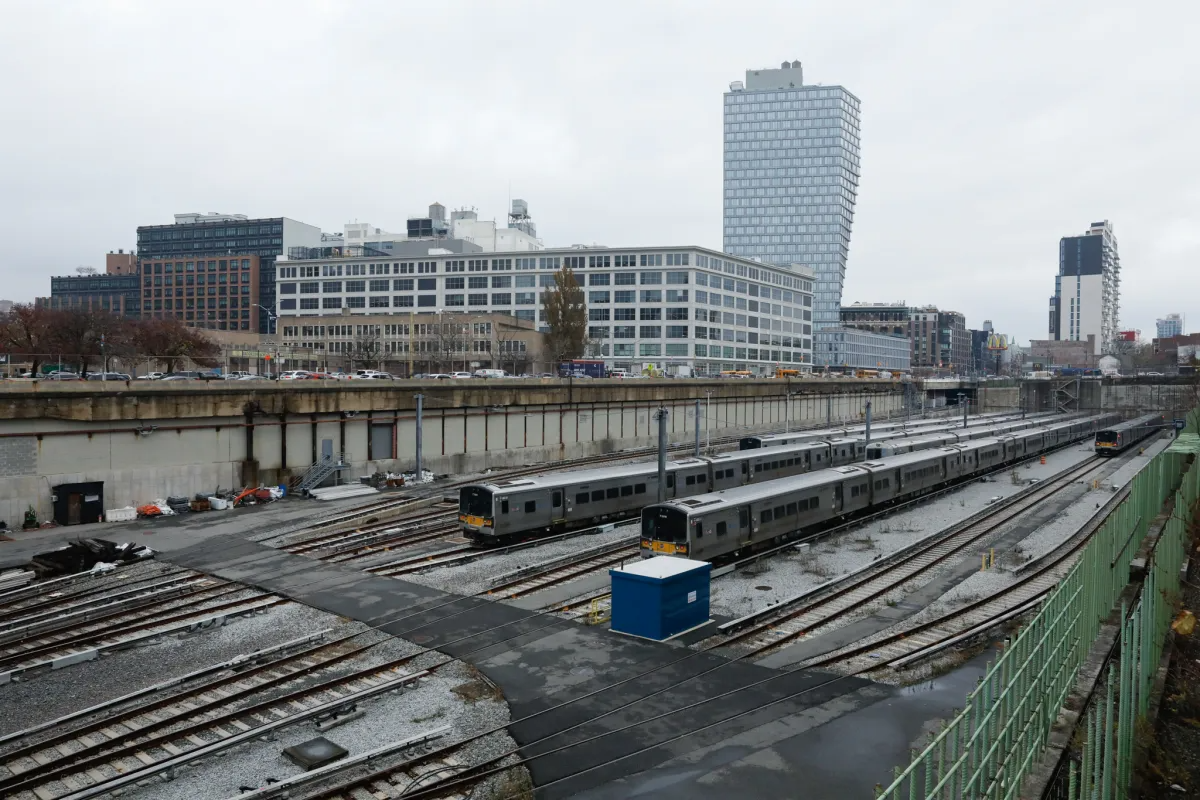Past and Present: Brooklyn Bridge Approach
A Look at Brooklyn, then and now. Public transportation across the Brooklyn Bridge was one of the major reasons for the bridge’s existence. The bridge opened to pedestrian and vehicular traffic in 1883. The first trolley service rolled along the tracks from the Sand Street Terminal in 1898. The tracks ran on the outermost sides…


A Look at Brooklyn, then and now.
Public transportation across the Brooklyn Bridge was one of the major reasons for the bridge’s existence. The bridge opened to pedestrian and vehicular traffic in 1883. The first trolley service rolled along the tracks from the Sand Street Terminal in 1898. The tracks ran on the outermost sides of the bridge, on the same roadway as the horse-drawn vehicles. Above, the elevated railroad lines ran across the bridge to Park Row, in Manhattan, operated by the Brooklyn Elevated Railroad Company. They began in 1883, the year the bridge opened, and were cable cars. The system was electrified in 1896, but the cable method was often used to cross the bridge itself. The photo on the left was taken in 1903, and what strikes me more than the sight of all those tracks, is the multitude of advertising bombarding the public. (I highly recommend going to the Shorpy site and viewing the photo full sized. You can pick out workers on scaffolds, and read every single ad with amazing clarity and detail). Now, as seen on the right, we only have the pedestrian lanes and the lanes for the thousands of cars and vehicles that cross every day. Thank goodness those ads are gone. The past was not always better.

(Photo: Shorpy.com)

(Photo: Google Maps)





I agree we should put more public resources into improving mass transit. On the other hand, charging a fee to drive into Manhattan puts a bigger burden on those who need to use cars to get to and from work and have poor public transportation options. If we are going to charge outer borough drivers and businesses, then we should be putting a surcharge on Manhattan car owners for owning cars. Especially since mass transportation is concentrated in Manhattan.
Truck traffic is very necessary, but hordes of single-occupancy cars driving around basically for free is not necessary. They’re what causes congestion — not trucks.
terrible analogy, LC Arnett.
We’re not talking about taking away people’s right to move from place to place, rapidly, and in relative comfort. We are advocating shifting our resources away from modes of transit that are relatively inefficient and have high externalities to ones that are more efficient and create improved environmental conditions for everyone.
moving our public resources away from car travel and toward mass transit is about the common good, JUST like public school funding.
No Arnett — it doesn’t work that way! Education and access to education is a driver of the city, state and federal economy. This benefits us all!
The use of a private automobile for personal (non-commercial) purposes has NEGATIVE externalities for the society as a whole. Providing quality education for children has POSITIVE externalities for the society as a whole.
Tybur6, the problem with the example that you use is if we apply it to another benefit, say education or healthcare, it doesn’t work.
“I have a child. I also recognize that my neighbors who do not have children(over half of the households in NYC) subsidize my child’s education and everything else that is associated with it (school buildings, teacher salaries, the Dept of Education, etc.) that my neighbors *don’t* use.
I recognize that this is lopsided.
I recognize that because of *my* desire to educate my child, I cause various externalities such as increased property taxes, increased pensions and health benefit costs for the state, use of public areas that could otherwise be repurposed, and so on.
In short, I recognize that if my *personal* interests are further constricted by the needs of the greater community, that I shouldn’t take this as an affront to humanity. But rather, it is appropriate.”
Wow, I think I just figured out how to solve NY’s budget problems…
Minard – I own a car. I also recognize that my neighbors who do not own a car (over half of the households in NYC) subsidize my free parking and everything else that I use on the roads (signs, signals, pavement, etc.) that my neighbors *don’t* use.
I recognize that this is lopsided.
I recognize that because of *my* driving, I cause various externalities such as added congestion, pollution, roadway wear and tear, slowing down of delivery trucks and other services causing prices to rise, and so on.
In short, I recognize that if my *personal* interests are further constricted by the needs of the greater community, that I shouldn’t take this as an affront to humanity. But rather, it is appropriate.
Furthermore, it seems that your definition of “engaged in the political process” and how our political environment functions is very narrow and probably simply wrong.
hey, I’m the only one who mentioned trucks (I think), and yeah, I get that they are now how we get stuff into (and out of) the city. I didn’t argue for less trucks, just cleaner, less polluting ones. hard to argue with that, arnett.
Here’s a nice post that highlights the space problems that cars create.
http://www.startsandfits.com/2005/09/retrofitting-bridges-for-inefficiency.html
“the bridge’s space devoted to cars had doubled but its usefulness had fallen by half”
tyburg, did a car run over your cat as a kid?
Are you seriously telling American citizens that they only have marginal rights to use the public roads that they have paid for through the nose with their tax dollars? Are you for real?
I have a feeling you have never been engaged in the political process -or owned a car for that matter.